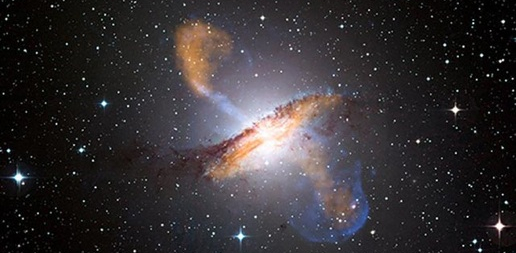
Research
The past years have seen a remarkable progress in our understanding of the Universe at high (> 100 MeV) and very high (VHE; > 0.1 TeV) energies. The advanced capabilities of modern gamma-ray instruments like H.E.S.S., MAGIC, VERITAS or Fermi are offering a unique tool to explore fundamental processes at highest photon energies and to elucidate the nature of cosmic objects. For the first time, a wide variety of energetic phenomena can be studied with unprecedented sensitivity over a large range in energy, including black holes and active galaxies (AGN), gamma-ray bursts and pulsars. At ultra high energies (UHE; > 10 EeV), on the other hand, cosmic-ray research has gained a strong impetus by indications of a possible correlation between the Pierre Auger-measured UHE cosmic ray events and the nearby AGN distribution, as well as evidence for a cosmic-ray composition that seems to become heavier towards the highest measured energies. These highest energy particles must originate in extreme astrophysical environments and are allowing to probe particle physics in an otherwise inaccessible energy range. More recently, the IceCube detection of high-energy (>10 TeV) neutrinos exceeding Galactic expectations has opened up a new window on astronomy and fundamental physics.
Much of the research I have carried out in recent years aims at a scientific foundation and understanding of the observational exploration with VHE instruments, including key science drivers for, e.g., the upcoming international Cherenkov Telescope Array (CTA) project. Current and on-going research projects include:
- Cosmic particle acceleration in relativistic outflows including stochastic particle acceleration in shearing AGN jets and magnetic reconnection in ultra-relativistic pulsar winds.
- Understanding the nuclear emission in radio-loud active galaxies based on time-dependent, multi-zone synchrotron and inverse Compton models, the origin of hard VHE source spectra and its relation to models for the Extragalactic Background Light (EBL).
- Non-thermal processes in the magnetospheres of pulsars and black holes, including particle acceleration in strong electromagnetic fields, the critical onset of relativistic MHD flows, synchro-curvature and inverse Compton emission processes.
- Astrophysical origins of ultra-high energy cosmic rays including the analysis of source requirements and impact on cosmic-ray composition towards highest energies for quiescent black holes, active galaxies and gamma-ray bursts.
- PeVatrons, the Galactic Center Emission, Sgr A* and the origin of Galactic Comic Rays.
- Electromagnetic signatures of supermassive binary black holes including unusual variability characteristics and QPOs, circum-nuclear disk formation, gap opening and spin evolution.
- High-Energy timing characteristics of accretion and outflows around compact objects, including anlaysis of the relation between accretion disk instabilities and duty cycles in AGN, and of the origin of powerlaw noise variability in accreting black hole systems.

